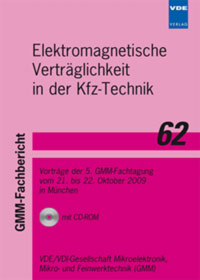Efficient analysis of integrated windscreen antennas
Conference: Elektromagnetische Verträglichkeit in der Kfz-Technik - 5. GMM-Fachtagung
10/21/2009 - 10/22/2009 at München, Germany
Proceedings: Elektromagnetische Verträglichkeit in der Kfz-Technik
Pages: 5Language: englishTyp: PDF
Personal VDE Members are entitled to a 10% discount on this title
Authors:
Schoeman, Marlize; Jakobus, Ulrich (EM Software & Systems – S.A. (Pty) Ltd, PO Box 1354, Stellenbosch 7599, South Africa)
Abstract:
The numerical analysis of automotive EMC problems deals with issues such as shielding, cable coupling and radiation, near- and far-fields, coupling of external fields to devices, etc. Modern antennas are increasingly integrated in these automotive problems in the form of windscreen antennas. Analysing windscreen antennas poses a challenging problem as the dielectric of the glass significantly affects the antenna characteristics and also because the glass consists of very thin layers. Full-wave methods, such as the Method of Moments (MoM), Finite Difference Time Domain (FDTD) and Finite Elements Method (FEM) are computationally very expensive (both CPU time and memory), while some approximations (such as thin dielectric sheet, wire coatings, etc.) give excellent results in many cases, but fail for more complex examples. An efficient procedure based on MoM and special correction terms for stratified dielectrics was developed as extension to FEKO to analyse windscreen antennas considering both radiation and coupling. This technique also accounts for windscreen specific properties such as finite size and curvature. The contribution will briefly present the benefits of the technique compared to existing methods. The application of this method is explained using practical examples from the automotive industry.


